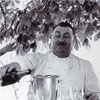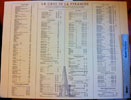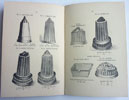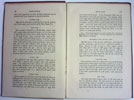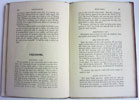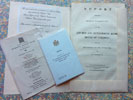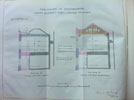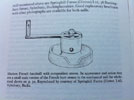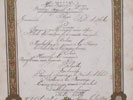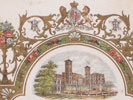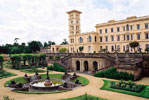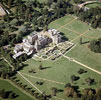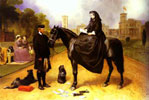Gastronomy as a Fine Art
OR The Science of Good Living A TRANSLATION OF THE “PHYSIOLOGIE DU GOUT” OF BRILLAT SAVARIN BY R.E. ANDERSON, M.A. (A printers device) A NEW EDITION London CHATTO & WINDUS, PICADILLY 1889.
12mo. 2feps. Half title. [1] Title page. [1] (1)vi Contents. (1)viii-xv Aesthetics of the Dining-Table. [1] (1)xx-xxiv Dialogue. (1)xxvi-xxxiii Preface. [1] xxxvi-xxxviii Fundamental Truths. (1)2 – 280. (1)2-32 Advertisements. 1fep. Original quarter wine red cloth with marbled boards, rubbed on the corners and a half inch square of marbled paper missing on the front. Spine with gilt writings. A 1” black ink stain on the outer edge. Internally very clean with untrimmed edges. Overall a fairly nice copy of a quite scarce edition.
- Jean Anthelme Brillat-Savarin born 1st April 1755, at Belley, Ain and expired on 2nd February, 1826 in Paris. He was a French lawyer and politician, and gained fame as an epicure and gastronome: With ‘Grimod’ the two writers effectively founded the whole genre of the gastronomic essay. Brillat-Savarin’s celebrated book ‘Physiologie du goût’ was first translated into English, titled ‘A Handbook of Gastronomy’ and first published in December 1825, two months before his death. The full title is "Physiologie du Goût, ou Méditations de Gastronomie Transcendante; ouvrage théorique, historique et à l'ordre du jour, dédié aux Gastronomes parisiens, par un Professeur, membre de plusieurs sociétés littéraires et savantes". It is less a treatise on cuisine than a witty compendium of anecdotes and observations intended to enhance the pleasures of the table; only the occasional recipe is included. Also known for his famous aphorisms, some of which are recalled below: • “Those persons who suffer from indigestion, or who become drunk, are utterly ignorant of the true principles of eating and drinking.” • "Tell me what you eat, and I will tell you who you are." • "To receive guests is to take charge of their happiness during the entire time they are under your roof”. • "The discovery of a new dish confers more happiness on humanity, than the discovery of a new star”.





click on image to enlarge

Antiquarian category
ref number:
11132 